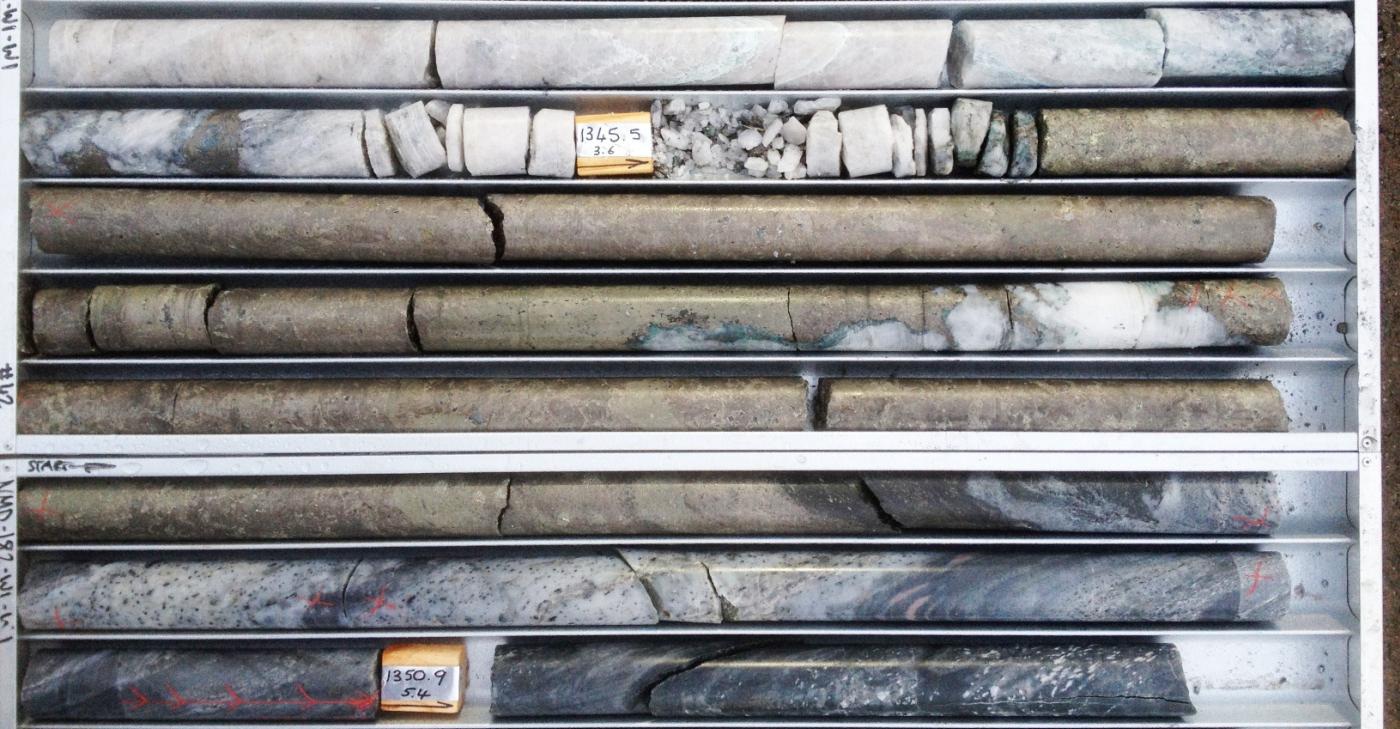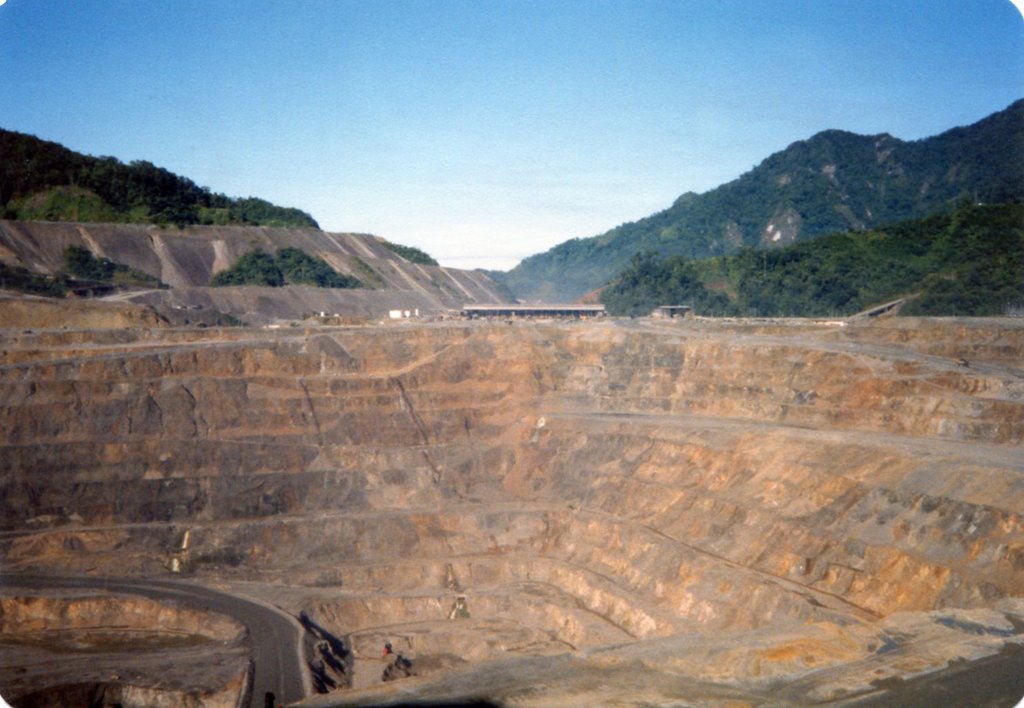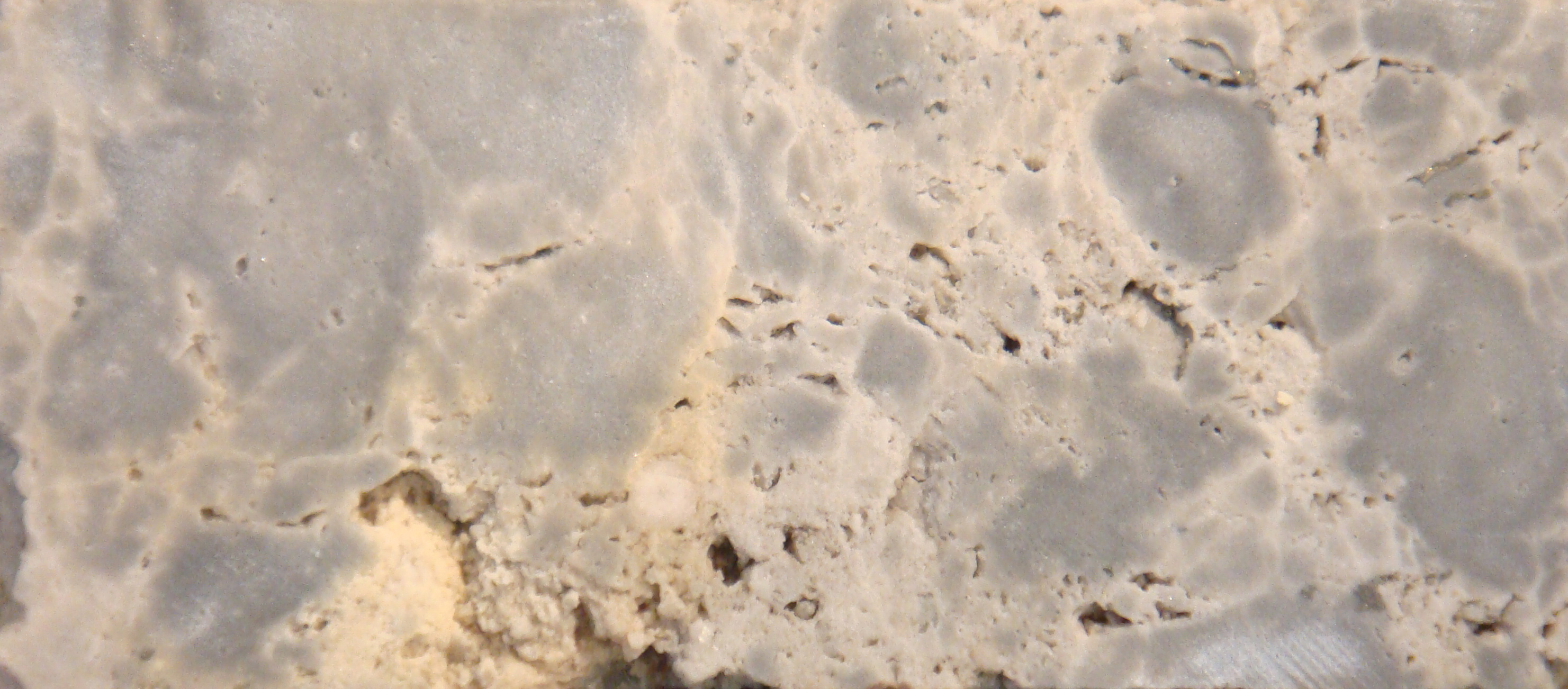While they did not encounter high grade mineralization, they did encounter gold, silver and copper. With this new drill data the company will be able to modify and update the previous interpretations.
[box type=”info” align=”aligncenter” ]Disclaimer: This is an editorial review of a public mining company press release and is not an endorsement. It may include opinions or points of view that may not be shared by the companies mentioned in the release. The editorial comments are highlighted so as to be easily separated from the release text and portions of the release not affecting this review may be deleted. Read more at How to Use this Site.[/box]
OTTAWA, ONTARIO–(Marketwired – June 26, 2014) – Everton Resources Inc. (“Everton” or the “Company“) (TSX VENTURE:EVR)(FRANKFURT:ERV) is actively exploring for precious metals in both Canada and the Dominican Republic and is pleased to report on the results of winter drilling and exploration plans for 2014.
[box type=”note” align=”aligncenter” ]
As the internet began to grow in popularity in the late 90’s it created an economic bubble known as the “dotcom bubble”. The bubble was driven by speculation and not by fundamental economics of supply and demand and was relatively short lived (1997 to 2000). During these booming times, some junior exploration companies looked to change their business model to ride the latest trend. Everton Resources began as a Mount Hope Resources before they acquired internet development firm 3net media in 1999 and shifted their focus to the growing web. By 2002, they had reverted back to mineral exploration and became Everton Resources.
Everton is not the first junior mining company we’ve talked about who spent time as an internet company. A few weeks ago we talked about GFK Resources who has a very similar history. It’s not surprising really. This business is full of dreamers and risk takers who know when to drop everything and follow the money. The recent flood of junior miners looking to get a piece of the growing market for legal marijuana is another testament to this.
In this release, Everton provides updates on it’s properties in the Dominican Republic and Quebec.
[/box]
Quebec
Hecla Quebec Inc. (“Hecla”), a wholly owned subsidiary of Hecla Mining Company, has advised Everton that it has completed its previously announced (February 27, 2014) winter drill program on the Wildcat 1 property. The Wildcat property is a strategically- located assemblage of claims partially surrounding the Goldcorp’s Eleonore mine, which is currently under construction. Hecla has the option to earn up to a 65% interest in the property.
The drill program tested one isolated gold-in-till anomaly exploration target within the Wildcat 1 claim blocks. The target was supported by a 500 metre-wide gold-in-till anomaly coincident with a gold-arsenic anomaly in soil. Although no significant drill assays were encountered in this program, the three holes drilled initiated the investigation of this area entirely covered by overburden.
[box type=”note” align=”aligncenter” ]In Quebec, Everton has optioned some gold properties to Hecla Mining and Hecla has not had much luck locating mineralized targets beneath a “gold-in-till” anomaly.
The thick blankets of boulders and sand known as “till” were left over by the glaciers from the last ice age. As glaciers advanced across the continent they sometimes eroded mineralized bedrock and left trails of ore minerals leading away from the original source. Geologists with knowledge of an area’s glacial history can follow these trails of ore minerals and use them pinpoint the original source. This is sometimes referred to as drift prospecting or till prospecting.
[/box]
Hecla has advised that it plans to undertake detailed ground work, on the Wildcat property, this summer with a budget in the order of $800,000. The program will include infill sampling in the areas of the winter drilling as well as other targets where the results were promising. The sampling will be done to better define exploration vectors and allow the delineation of targets that could be the basis of a drill program later this year.
Dominican Republic
Everton completed a diamond core drill program at the Ampliacion Pueblo Viejo property. A total of 2,525 metres were drilled in 10 holes. All of the holes except hole #4 achieved the intended depths. The holes were planned to test potential structures and associated mineralization interpreted from previous drill campaigns, ground and airborne geophysics, soils and rock geochemistry and geological mapping.
Although the drilling did not include results that could be considered potential high grade mineralization, several intervals of anomalous gold, copper, silver and pathfinder elements were encountered. The maximum gold value encountered was 0.93 g/t over an interval of 1.52 metres in holes 14-01 and 03. Other gold assays are in the range of 0.52 g/t to 0.61 g/t (3 intercepts) over interval lengths of 1.04 to 1.52 metres. Silver assays in the range of 5.5 g/t to 22 g/t over intervals of 0.99 to 2.96 metres and copper assays in the range of 1.18% to 2.05% over intervals of 0.55 to 1.13 metres in hole 14- 04. A total of 1,844 samples were collected and assayed at Acme Laboratories (“Acme”).
[box type=”note” align=”aligncenter” ]
The Dominican Republic’s largest operating mines are the Faldanco and Pueblo Viejo Mine. Xstrata Nickel operates the Falcando mine, a nickel laterite project that is the world’s 12th largest producer of nickel. The Falcando mine was shut down in 2008 due to declining commodities but was recommissioned at 50% capacity in 2011. The Pueblo Viejo mine is the country’s largest gold-silver mine operated by GoldCorp and Barrick Gold. The Pueblo Viejo mine had been in production since 1975 before being closed in 1991 due to declining gold and silver prices. The mine was acquired by Barrick Gold in 2009 and began production in 2012. Everton Resources’s claims are in the vicinity of the Pueblo Viejo mine.
Drilling was designed to test previously interpreted mineralization. It isn’t clear from this news what was previously interpreted, but they did not encounter high grade mineralization. Still, they did encounter gold, silver and copper. With this new drill data the company will be able to modify and update the previous interpretations.
[/box]
The samples were prepared at the Acme facilities in Maimon, Dominican Republic and sent to Acme in Vancouver, British Columbia, for assaying. The assay preparation is the standard Acme for rocks R200, and assayed by Aqua regia digestion followed by ICP/MS (Acme assay code AQ200). Certified standards and blanks were inserted in the sample stream, as well as duplicates and un-mineralized limestone samples for QA/QC control.
[box type=”note” align=”aligncenter” ]
The samples were submitted for Aqua Regia digestion and followed up with ICP/MS. Aqua Regia digestion is an analytical technique where samples are placed in a strong acid (Hydrochloric (HCL) and Nitric acid (HNO3)). This technique is known as partial digestion where the acid liberates elements from the minerals within the sample. The solution is then placed into a machine known as a ICP/MS (Inductively Coupled Plasma Mass Spectrometer) which determines the amount of elements are within the sample.
[/box]
On the Ponton concession (100% Everton) in the Dominican Republic, planning is underway for line cutting and an Induced Polarization (“IP”) survey to be conducted. This work will commence upon receipt of permitting. It is hoped that the geophysics will be completed and evaluated this summer and will be used to define targets for a drill program later this year. Previous work on the concession by Everton has identified interesting gold mineralization in soil anomalies within the area to be surveyed with IP. These surficial anomalies will be targeted by the proposed drill program.
[box type=”note” align=”aligncenter” ]
The Unversity of Barcelona conducted a study on the Ampliacion Pueblo Project and concluded the property had the potential to host volcanogenic massive sulfide and VMS-epithermal style mineralization. Iron sulfides (such as pyrite an pyrrhotite) can form as dispersed minerals along the periphery of these types of deposits. Induced Polarization (IP) surveys can be useful for detecting areas that may host these dispersed metal-bearing minerals.
[/box]
Everton recently announced (April 1, 2014) the successful acquisition of options on six mining concessions in the Dominican Republic that are described in the news release dated October 25, 2013. Everton is currently compiling information related to these concessions and formulating plans to advance these strategic properties.
The technical information on the Dominican Republic in this news release has been reviewed and approved by Mr. Hugo Dominguez, C.P.G., who acts as Everton’s Qualified Person, as defined under National Instrument 43-101.
[box type=”note” align=”aligncenter” ]Everton Resources is currently trading at $0.12, close to it’s 52-week low of $0.10. Perhaps as the Dominican Republic’s mining industry bounces back so too will Everton’s fortunes. Time will tell.
[/box]
About Everton Resources Inc.
Everton is actively exploring in the Dominican Republic adjacent to the Pueblo Viejo Mine, owned by the world’s two largest gold mining companies, Barrick Gold Corporation (60%) in partnership with Goldcorp Inc. (40%) (“Goldcorp”). Everton also holds an interest in the Opinaca region of James Bay, Quebec where the Company has partnered with Hecla Mining Company (formerly Aurizon Mines Ltd.) which is advancing Everton’s interest by funding 100% of all exploration work on one of the largest land packages adjacent to Goldcorp’s Eleonore gold deposit.
[box type=”success” align=”aligncenter” ]Have a company or release you’d like us to look at? Let us know though our contact page, through Google+, Twitter or Facebook.[/box]






